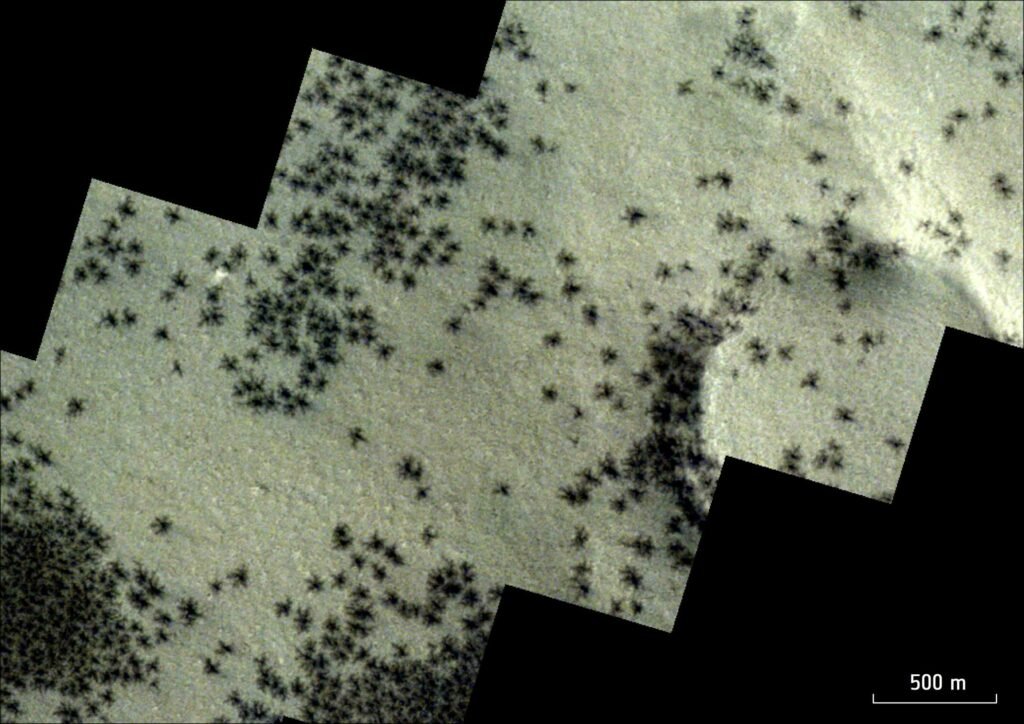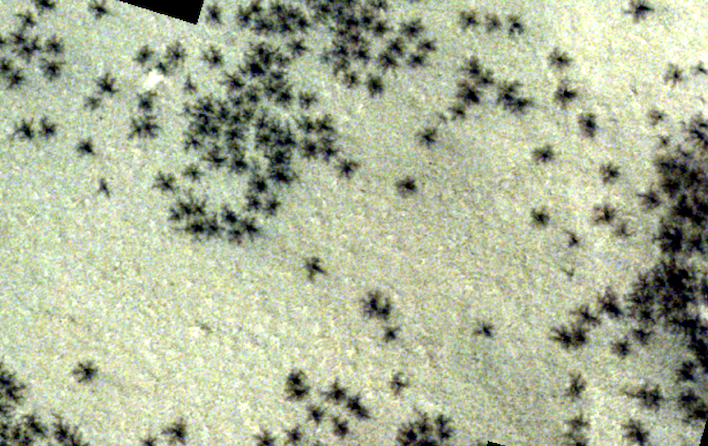On the cold dead surface of Mars, something remarkable happens each spring. The red planet becomes infested with giant black spiders.
At least, that’s what it looks like. In reality, vast fields of dark, spider-like formations become etched into the Red Planet’s landscape. No, they are not alive, nor actually spiders, but instead a geological phenomenon that occurs nowhere else in the solar system.
With the recent orbital passes of the European Space Agency’s (ESA) Mars Express and the ExoMars Trace Gas Orbiter (TGO), scientists are now closer than ever to understanding these mysterious features known as “araneiforms.”
Araneiforms are small, dark-colored features that begin to form when sunlight falls on the frozen carbon dioxide resting on the surface that accumulated during the planet’s winter months. The light warms these frozen deposits, causing the carbon dioxide ice beneath the frozen exterior to turn into gas. Eventually, the gas punches through the ice, blasting dust out like a geyser and forming spider-like dendritic channels.
They can range in size from as small as 45 meters to as large as one kilometer across. These features are transient; they appear each spring and fade as the ice sublimates away, only to reappear the next year in a slightly different form.


The study of araneiforms is not just about understanding a curious surface feature. It holds deeper implications for our knowledge of Martian climatology and atmospheric science. Moreover, understanding these processes provides insights into the dynamic nature of Mars’ surface and atmosphere interaction, which is crucial for future missions that may rely on in-situ resource utilization. The ability to predict and understand atmospheric conditions on Mars is vital for the planning of human missions and long-term settlements.
The last thing any future astronaut needs is to get blasted by a giant spider gas vent.
Missions like Mars Express and TGO continue to send back data, refining our models of Martian atmospheric processes and, by extension, our understanding of similar processes that might occur on other planets.
“Mars Express has revealed a great deal about Mars in the last two decades and counting,” the ESA stated in a press release. “The orbiter continues to image Mars’s surface, map its minerals, explore the composition and circulation of its atmosphere, probe beneath its crust, and study the Martian environment.”
In essence, Mars’ spiders are more than just a quirk of Martian geology—they are a window into the dynamic and ever-changing environment of our nearest planetary neighbor. And, they are also creepy as hell.
MJ Banias covers space, security, and technology with The Debrief. You can email him at mj@thedebrief.org or follow him on Twitter @mjbanias.

